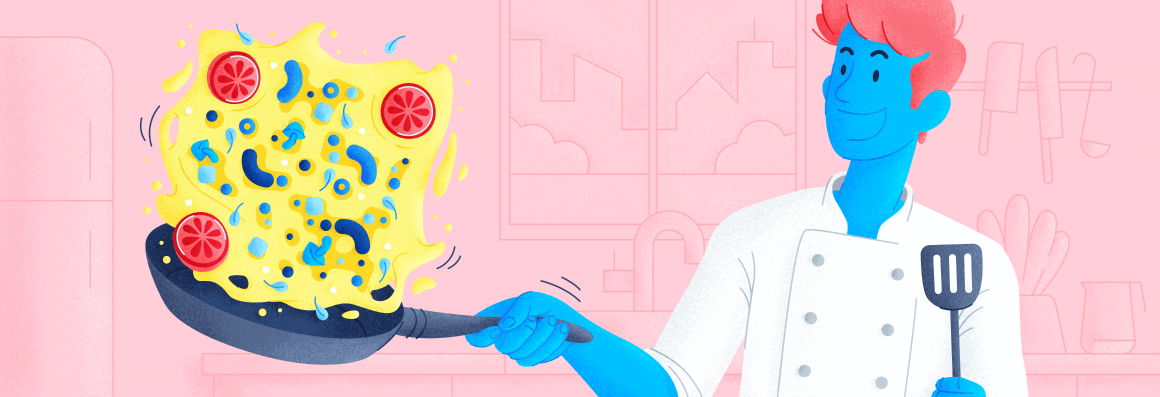- Best Practices ●
- COVID-19 ●
- Industry Trends ●
- Partners ●
- Product ●
7 Eco-Friendly Packaging Ideas To Boost Sustainability Efforts
Sustainability isn’t a hop-on hop-off trend—it’s a life-term commitment to leaving a positive ecological footprint. Businesses now bear greater responsibility for maintaining green practices, because whether they realize it or not, every decision can impact the planet.
Regardless of the size of your business, this is an opportunity to integrate eco-friendly practices into your strategies, showing customers you care.
While some brands still engage in greenwashing, it goes without saying that it does more harm than good. Consumers are looking to purchase from brands they can trust, which is an important step in building long-term customer relationships.
Starting small can make a big difference. That’s why we’ve gathered seven sustainable packaging ideas to jumpstart your journey into becoming an eco-conscious brand. Explore these ideas and examples to help your business contribute to a greener Earth.
7 eco-friendly packaging ideas
Peruse these groundbreaking environmentally friendly packaging ideas and sustainable packaging examples from eco-pioneer brands. Get inspired by these trailblazers paving the path to a more sustainable future.
Note: The brands mentioned in this article were found during our online research.
1. Switch to biodegradable packaging
When researching a sustainable solution for your packaging, consider options that will naturally break down and decompose. Cornstarch, hemp, seaweed, cellulose, and paper are examples of biodegradable materials that decompose over time, making them a much greener choice for the environment.
Sustainable packaging example
Consumer Packaging Goods (CPG) brand, Buck Naked Soap Company, takes pride in its sustainable products and packaging. Their mani-pedi boxes are made entirely from biodegradable materials; they are compostable and carbon neutral.
“Buck Naked” isn’t just a play on words—it’s a brand commitment to creating clean products free of synthetics and chemicals and finding the most sustainable packaging options. This includes eliminating unnecessary packaging, swapping plastic for 100% recycled glass materials, or sourcing raw materials from trusted suppliers.

2. Use a combination of compostable and recyclable materials
When shifting to sustainable packaging options, consider compostable and recycling materials. Recycled materials are waste products converted into new materials, while compostable packaging is a mix of plant-based and recycled materials that can be disposed of at home—in soil or a compost bin, for example. There, they can break down organically, without harming the environment.
Sustainable packaging example
From the inner contents of their products to the outer material of their packaging, retail cleaning brand Spruce is dedicated to prioritizing the health of their customers and the planet.
Founder, Mahira says, “I don’t believe anyone should have to compromise on quality, efficacy, or convenience when making choices that are beneficial to their health or the planet.”
Putting these words into action, the company produces chemical-free products and compostable, forest management-certified (FSC) refills. The outer packaging is made with biodegradable ink and 100% recycled materials.

3. Innovate with plant-based packaging
While traditional packaging relies on materials from non-renewable sources, plant-based packaging uses ingredients sourced from renewable sources like wheat, sugarcane, and cornstarch. One of the many benefits of using plant-based ingredients in your packaging is that it is compostable, meaning it doesn’t end up in landfills.
Sustainable packaging example
One brand that has stood out is the skincare brand Pangea Organics. Disturbed by the plastic waste endangering sea life he witnessed during his years of scuba diving, founder Joshua Scott Onnysko made it his mission to ensure that all his company’s products were plastic-free.
Taking innovation to the next level, the company embedded organic seeds within the soap packaging, which allowed consumers to put their green fingers to work by planting the packaging in the soil. Although they had to stop producing these specific product packages, it sparked an important conversation around zero-waste packaging.
Josh Onnysko’s vision came to life in 2021 when the company released its first product line of plastic-free body care packaging, marked by the bold hashtag #LifeAfterPlastic. Since then, Pangea has transitioned to plastic-free packaging, becoming a sustainability trailblazer within the eco-friendly cosmetics industry.

4. Start a recycling program
Brands striving for sustainability must not only take care of their waste but also seek responsible solutions for product and package waste, without burdening their customers.
Companies like Patagonia, the Body Shop, and Nike Grind have embraced the circular economy—a sustainable model that aims to eliminate waste and optimize resources by keeping products and materials in an endless cycle of use and regeneration.
Sustainable packaging example
Cosmetic brand Lush also supports the circular economy model through its “Bring it Back” recycling program. This initiative encourages customers in the UK and Ireland to return their plastic packaging in exchange for a discount on their next purchase or a free face mask.
Taking their sustainability efforts further, Lush has invested in their Green Hub, a facility that embodies the principles of the five R’s of waste management: reuse, repurpose, recover, repair, and recycle.
The Green Hub’s initiatives have significantly reduced the company’s waste production with Lush recycling 81% of their manufacturing waste, repairing over 1431 electrical items, and donating more than 152,000 products. These efforts pave a green path forward towards a circular economy.

5. Reuse or repurpose
Another effective eco-friendly packaging idea is to extend the life of your packaging by transforming it into something consumers can use for purposes beyond packaging. This is the essence of repurposing in a nutshell.
Businesses have a great opportunity to educate their customers about waste and encourage them to consider their own solutions for repurposing packaging. While repurposing doesn’t completely solve the waste problem, it does give the packaging materials a second life.
Sustainable packaging example
Doing their part for the environment, Samsung has introduced an innovative upcycling solution for their television packaging. They developed special corrugated cardboard packaging for their televisions that can be upcycled into various types of furniture options.
Through discussing the sustainable packaging concept, the creators looked to customers as a source of inspiration. They discovered that consumers were already purchasing additional furniture items to accommodate their television accessories. Building on this insight, they initiated discussions with small furniture producers, leading to the creation of unique designs for TV consoles, desk storage solutions, and other furniture options.
Samsung’s upcycling packaging offers instructions on how to build seven different designs from scratch, ranging from cardboard playhouses for cats and kids to sturdy bookshelves capable of holding customers’ book stacks.

6. Use seaweed-based packaging
Amidst the rampant plastic production and its detrimental impact on our ecosystem, a team of material scientists, designers, and mechanical engineers at Notpla have embraced an alternative packaging solution: seaweed.
Notpla’s extensive research highlights the massive potential of seaweed. it grows rapidly and abundantly, decomposes naturally, and is rich with minerals and fibers, making it strong, durable, and flexible enough to replace plastic packaging.
Sustainable packaging example
Le Club, a swimwear company making waves in sustainability, has become the first swimwear brand to adopt seaweed-based packaging. Partnering with Sway the Future, an innovative company specializing in creating seaweed packaging and products, they introduced home-compostable packaging made from seaweed and plants, completely free from plastic.
Le Club’s commitment to sustainability extends beyond packaging to every garment they produce. They continually explore new technologies, using materials like organic cotton and recycled plastic bottles to create their swimwear. Their goal is to become 100% sustainable by 2025.

7. Invest in smart packaging
Embracing smart packaging solutions is a valuable addition to consider for sustainable packaging ideas. That’s because smart packaging technology performs several roles—including but not limited to reducing waste by prolonging the shelf life of food, optimizing inventory management to minimize overstocking, improving recycling processes and reuse initiatives, and educating customers on recycling guidelines.
Sustainable packaging example
Adding a product QR Code to your packaging is a fast-tracked way to make your packaging smarter. You can include instructions on the packaging about recycling guidelines, showcase videos about a brand’s sustainability initiatives, or enable product tracking through the entire supply chain.
Taking your packaging sustainability to the next level, adding a 2D Barcode lets you track your product journey, helps you educate your customers on where ingredients come from, and even gives you on-the-minute scan data for better customer insights.

Make your packaging green with QR Code Generator PRO
These eco-friendly packaging ideas and brand examples demonstrate how innovation and a sustainable mindset can shape a better, more eco-friendly future. Switching from traditional packaging materials to biodegradable options and participating in recycling programs can make a huge difference.
Smart packaging technologies, such as QR Codes, also show promising potential in promoting sustainable practices, enhancing brand transparency, and providing insights into product life cycles.
Sign up for QR Code Generator PRO today to make your packaging smarter and greener!





 Add custom colors, logos and frames.
Add custom colors, logos and frames.
